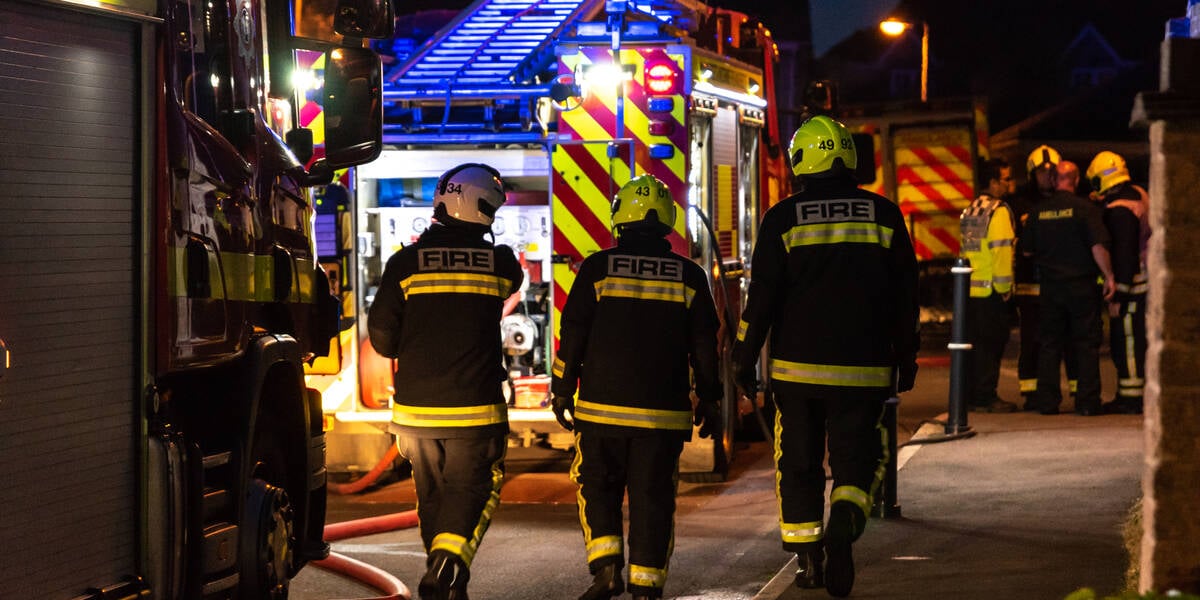UK Emergency Services Take DIY Approach Amid 12-year Wait For Comms Upgrade

The UK's police, fire, and ambulance services are scrambling for solutions amid an uncertain wait for the Emergency Services Network (ESN) following Motorola's departure from a £400 million ($498 million) contract.
Facing a 12-year delay with no delivery date in sight for the UK emergency services' voice and data network, users are being forced to look for a stopgap to upgrade the reliable but legacy Airwave system. Service leaders told MPs this week they were concerned that user processes and technology decisions could not be woven back into ESN if it ever arrived.
Speaking to the Public Accounts Committee, Ben Norman, deputy chief fire officer of Greater Manchester Fire and Rescue Service, said while ESN had been effectively paused, there was a risk that alternatives to the current Airwave system would become "embedded."
"The fire and rescue services use [Airwave] as a data-based product, but in truth it is little more than text messages. So we have found alternatives and there's a real risk that people won't want to step away from those alternatives, or a real risk that those alternatives are so heavily embedded that it's difficult culturally to make that change [to ESN]," he said.
Chris Lucas, senior user of NHS Ambulance Radio Programme, told the public spending watchdog that services were implementing data solutions based on LTE.
"We're increasingly using more LTE commercial services to backfill the gap where ESN isn't at the moment. And I think that's the challenge. We're getting used to using those services. We've currently mobilizing the vehicle hardware and LTE connections – originally designed for ESN – but we put in EE commercial SIMs. So that's happening now," he said.
The cost of supporting Airwave technology combined with developing the ESN has been a staggering £11 billion ($13.7 billion) over 10 years [PDF], according to the National Audit Office (NAO). The role of Motorola in both old and new systems attracted the interest of the Competition and Markets Authority owing to a potential conflict of interest on pricing and delivery. Together with the Home Office's negotiations with Motorola, this led the US technology supplier to walk away from its £400 million ($498 million) contract for ESN.
- UK's Emergency Services Network unlikely to start operating until 2029
- £2B in UK taxpayer cash later, and still no Emergency Services Network
- UK regulator proposes price cap on Motorola as supplier of Airwave network
- UK police to spend tens of millions on legacy comms network kit
According to the NAO, the Home Office expected Motorola to be awarded £304 million ($379 million) for work on ESN by March 31, including money for software and systems that the emergency services will not use whenever ESN goes live, which won't be before 2026 and may be as late as 2029.
With Motorola gone from the critical push-to-talk and data solution provided by ESN's Lot 2 contract, the Home Office has been forced to reprocure the work and expects to appoint a new supplier in 2024, leading to further delays and uncertainty for service users.
"Just as progress was starting to be made, there's a whole piece of the programme missing," said Simon Ricketts of the Home Office's Independent Technical Assurance Panel.
Ricketts told MPs the UK government had gone too early with plans for a technology replacement in around 2012, owing to trouble with the Airwave contract procured under the Private Finance Initiative.
An international review by his team suggested services in other countries were now able to move ahead with mobile broadband technology for emergency services at a faster pace than the UK, he said, with France expected to have its network up and running in time for the Paris 2024 Olympics. ®
From Chip War To Cloud War: The Next Frontier In Global Tech Competition
The global chip war, characterized by intense competition among nations and corporations for supremacy in semiconductor ... Read more
The High Stakes Of Tech Regulation: Security Risks And Market Dynamics
The influence of tech giants in the global economy continues to grow, raising crucial questions about how to balance sec... Read more
The Tyranny Of Instagram Interiors: Why It's Time To Break Free From Algorithm-Driven Aesthetics
Instagram has become a dominant force in shaping interior design trends, offering a seemingly endless stream of inspirat... Read more
The Data Crunch In AI: Strategies For Sustainability
Exploring solutions to the imminent exhaustion of internet data for AI training.As the artificial intelligence (AI) indu... Read more
Google Abandons Four-Year Effort To Remove Cookies From Chrome Browser
After four years of dedicated effort, Google has decided to abandon its plan to remove third-party cookies from its Chro... Read more
LinkedIn Embraces AI And Gamification To Drive User Engagement And Revenue
In an effort to tackle slowing revenue growth and enhance user engagement, LinkedIn is turning to artificial intelligenc... Read more

